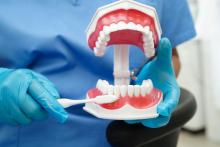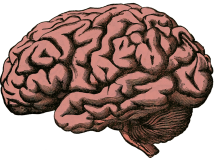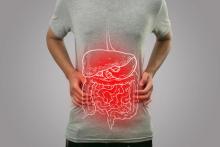חדשות המחקר

Inshirah Sgayer, Yousef Haddad, Yara Nakhleh Francis, Ruba Tuma, Lior Lowenstein, Marwan Odeh: Foetal cerebral blood redistribution in idiopathic polyhydramnios and the impact on perinatal outcomes (J Obstet Gynaecol . )
Idiopathic polyhydramnios is associated with adverse neonatal outcome. The aim of this study was to examine the value of the middle cerebral artery pulsatility index (MCA-PI) in predicting adverse perinatal outcome in pregnancies affected by idiopathic polyhydramnios.

Hanan Rohana, Maya Azrad, Avi Peretz: Evaluation of vaccine perceptions in Israel's Elderly: A Comparative study of COVID-19 and influenza vaccination attitudes (Vaccine X)
This study aimed to evaluate the attitudes of Israeli elderly population towards COVID-19 and influenza vaccines, and to assess factors contributing to these attitudes.

Zaher Marjy, Iris Slutzky-Goldberg: Retreatment of a Failed Regenerative Endodontic Treatment in an Immature Tooth with a Horizontal Root Fracture: A Case Report (Int J Clin Pediatr Dent . )
Regenerative endodontic treatment (RET) has been suggested for the treatment of traumatized necrotic immature teeth. There are only a few reports of using RET to treat a horizontal root fracture. The aim of this paper is to describe successful regenerative retreatment in a tooth with a horizontal root fracture and dens invaginatus.

Chagit Peles, Mary C J Rudolf: Nutritional Nesting (Nestrition): Shaping the Home Food Environment in the First Pregnancy (Nutrients . )
Objective: To investigate primiparous women's knowledge, attitudes, and practices regarding the physical home food environment (PHFE) and to assess if the first pregnancy provides a teachable opportunity to enhance the PHFE of first-time pregnant couples.

Khalaf Kridin, Noor Mruwat: The risk of different subtypes of psoriasis following an episode of guttate psoriasis (J Am Acad Dermatol .)
In the current study, we sought to evaluate the risk lifetime and time-stratified risk of PP, psoriatic arthritis (PsA), generalized pustular psoriasis (GPP), palmoplantar pustular psoriasis (PPP), erythrodermic psoriasis (EP), and nail psoriasis (NP) in a large cohort of patients diagnosed with an episode of GP.

Raed Salim: The Association Between Maternal ABO Blood Group and the Occurrence of Spontaneous Preterm Birth: A Retrospective Population-Based Cohort Study (Reprod Sci . )
There is limited and inconsistent evidence that imply a relationship between ABO blood types and rate of preterm birth (PTB). We aim to examine the association between maternal ABO blood group and PTB rate.

Elias Daud: The influence of post-processing software on quantitative results in 4D flow cardiovascular magnetic resonance examinations (Front Cardiovasc Med .)
Several commercially available software packages exist for the analysis of three-dimensional cine phase-contrast cardiovascular magnetic resonance (CMR) with three-directional velocity encoding (four-dimensional (4D) flow CMR). Only sparse data are available on the impact of these different software solutions on quantitative results. We compared two different commercially available and widely used software packages and their impact on the forward flow volume (FFV), peak velocity (PV), and maximum wall shear stress (WSS) per plane.

Chaim Putterman: Lipocalin-2 drives neuropsychiatric and cutaneous disease in MRL/lpr mice (Front Immunol . )
Approximately 20-40% of patients with systemic lupus erythematosus (SLE) experience neuropsychiatric SLE (NPSLE), which often manifests as cognitive dysfunction and depression. Currently, there are no approved treatments for NPSLE because its underlying mechanisms are unclear. Identifying relevant mediators and understanding their contribution to pathogenesis are crucial for developing targeted treatment options. Lipocalin 2 (LCN2) is a multifunctional acute-phase protein that plays important roles in immune cell differentiation, migration, and function. LCN2 has been implicated in models of neuroinflammatory disease.

Igor Waksman, Seema Biswas: Econeurobiology and brain development in children: key factors affecting development, behavioral outcomes, and school interventions (Front Public Health . )
The Econeurobiology of the brain describes the environment in which an individual's brain develops. This paper explores the complex neural mechanisms that support and evaluate enrichment at various stages of development, providing an overview of how they contribute to plasticity and enhancement of both achievement and health.

Response for Key Learnings and Perspectives of a Newly Implemented Sex-and Gender-Based Medicine Modular Course Integrated into the First-Year Medical School Curriculum: A Mixed-Method Survey (Adv Med Educ Pract . )
Response to Letter
[Ruba Tuma, Nomy Dickman, Raymond Farah, Rola Khamisy-Farah]
Comment here: https://pubmed.ncbi.nlm.nih.gov/39372504/

Tzipora Falik-Zaccai: Newborn screening algorithm distinguishing potential symptomatic isovaleric acidemia from asymptomatic newborns (J Inherit Metab Dis .)
Newborn screening (NBS) for isovaleric acidemia (IVA) reduces mortality and morbidity; however, it has also resulted in the detection of individuals with an asymptomatic or mild presentation for which early detection via newborn screening has not been proven to alter neurological outcome. We reevaluated biochemical and molecular data for newborns flagged positive for IVA in aim of developing a new screening algorithm to exclude the latter from positive screening.

Sunanda Biswas Mukherjee: A Computational Approach for Designing Synthetic Riboswitches for Next-Generation RNA Therapeutics (Methods Mol Biol . )
Riboswitches are naturally occurring regulatory segments of RNA molecules that modulate gene expression in response to specific ligand binding. They serve as a molecular 'switch' that controls the RNA's structure and function, typically influencing the synthesis of proteins. Riboswitches are unique because ...

Mariam Ashkar Daw, Maya Azrad, Avi Peretz: Associations between biofilm formation and virulence factors among clinical Helicobacter pylori isolates (Microb Pathog . )
Helicobacter pylori (H. pylori) causes several gastrointestinal diseases. Its virulence factors contributing to disease development include biofilm formation, cytotoxin-associated gene A (CagA) and vacuolating cytotoxin A (VacA) proteins that induce host tissue damage. In addition, urease activity enables H. pylori growth in the gastric acidic environment. This work aimed to characterize bacterial factors associated with biofilm production among 89 clinical H. pylori isolates, collected from patient gastric biopsies.

Dalit Porat Ben Amy, Hanan Rohana, Maya Azrad, Ori Bar, Imad Abu El-Naaj, Avi Peretz: Exploring the relationship between cycle threshold values and oral manifestations in COVID-19: a comprehensive overview (Acta Odontol Scand . )
This cross-sectional study aimed to compare oral manifestations between severe acute respiratory syndrome coronavirus-2 (SARS-CoV-2)-positive and SARS-CoV-2-negative patients and to examine associations between oral symptoms, Ct values of E and N SARS-CoV-2 viral genes, and the implications of low Ct values indicating a high viral load, which is a predictive factor for the outcome of COVID-19.




